What Attracts Dragonflies? 17 Eye-Catching Plants to Try
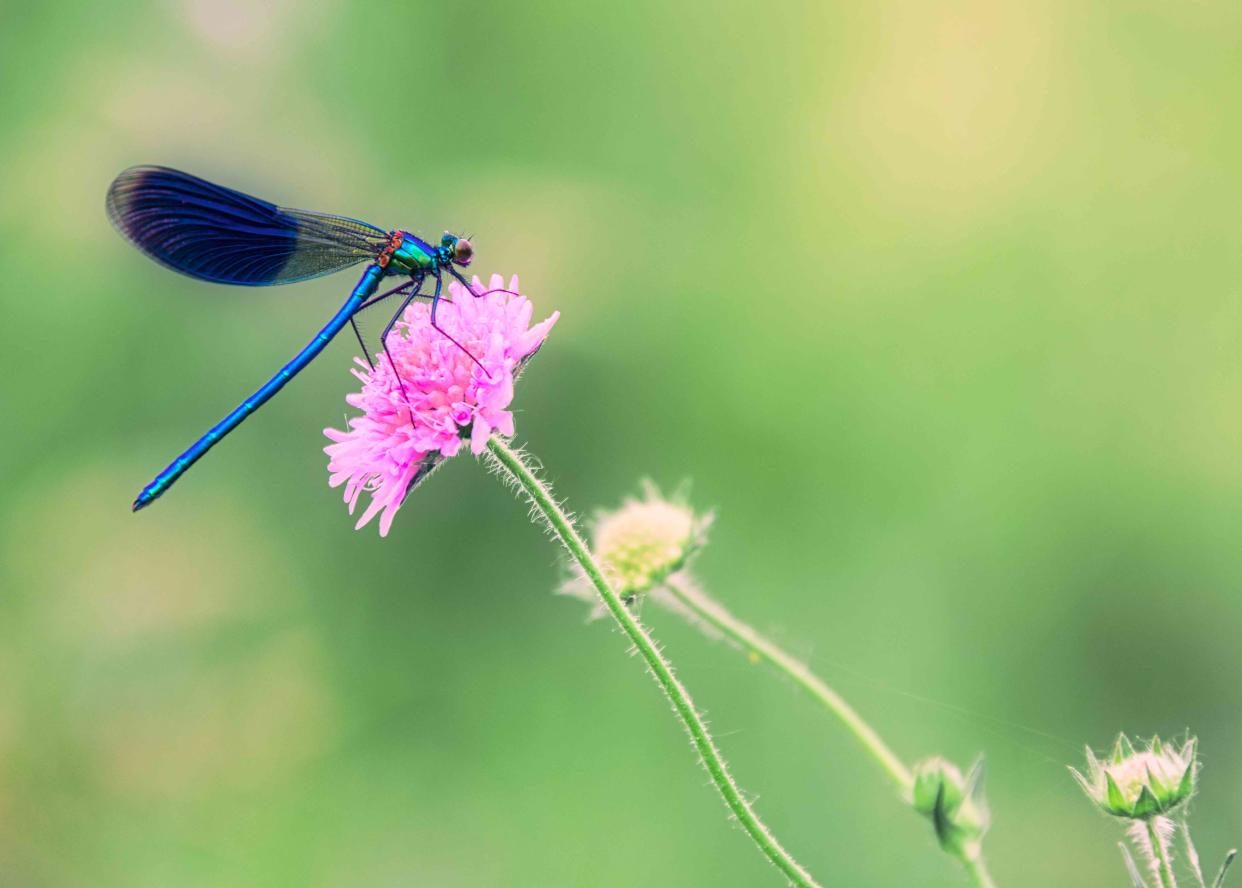
Nikola Nemet / Getty Images
Fact checked by Sarah Scott
Dragonflies are graceful and beautiful to watch, but they also help to reduce other pesky insect populations by preying on mosquitoes and flies. If you want to better defend against mosquitoes, it's a wise idea to make your backyard hospitable to dragonflies. One way to do that is with smart landscaping.
Dragonflies are aquatic insects that need fresh water to breed, so adding a pond to your garden is one way to draw them to your backyard. They tend to like open garden layouts with a wide range of plants—including ones that also attract the insects they prey on.
Here are suggestions for pretty plants that will attract dragonflies to your garden, including a wide range of hardiness zones.
Black-Eyed Susan
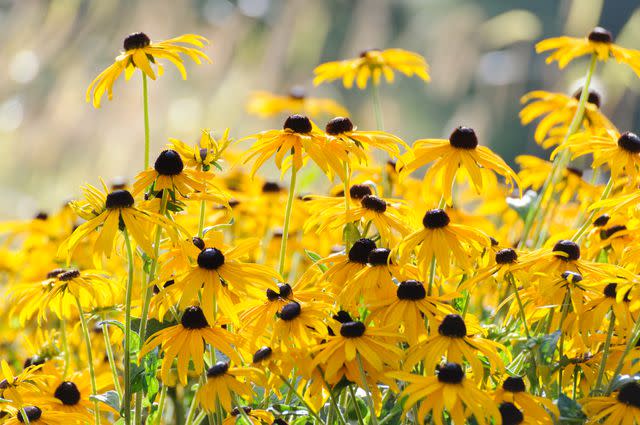
Dorte Fjalland / Getty Images
Easy-to-care-for black-eyed Susans have bright yellow (and sometimes orange or red) petals and dark center discs that serve as a great landing platform for many pollinators, including the insects that serve as food for dragonflies.
Name: Black-Eyed Susan (Rudbeckia hirta)
USDA Hardiness Zones: 3-8
Light: Full sun
Soil: Moist, well-drained
Flower Color: Yellow, orange, red
Coneflower
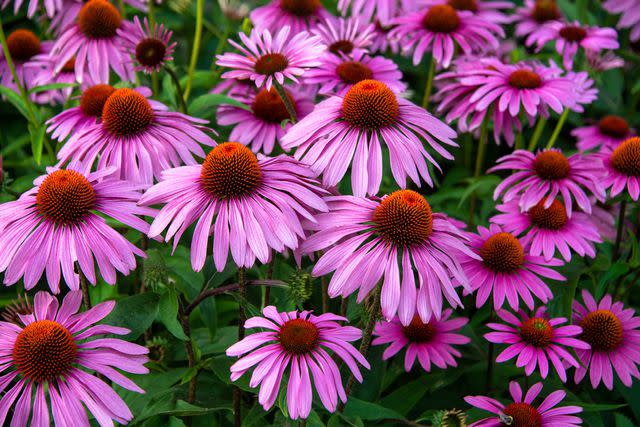
Nancybelle Gonzaga Villarroya / Getty Images
Coneflowers come in many colors and shapes, and their pretty, pollen-rich blooms attract dragonflies and other beneficial pollinators. They require little maintenance and grow best under full sun. The blossoms grow on stalks that can reach up to three feet tall, and dragonflies like perching on them because of their height.
Name: Coneflower (Echinacea)
USDA Hardiness Zones: 3-8
Light: Full to partial
Soil: Rocky, clay or sandy
Flower Color: Pink, yellow, orange, red, white
Aster
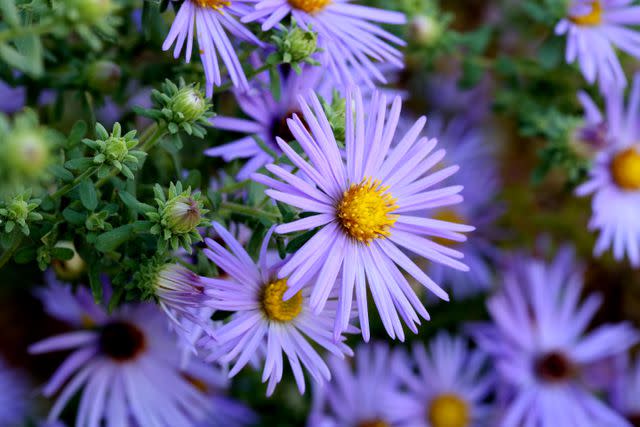
Debi Dalio / Getty Images
These daisy-like flowers, sometimes referred to as the starwort of frost flower, are native to North America. Asters are perennial plants that thrive around water sources such as marshes and ponds, which also attract dragonflies.
Name: Aster (Symphyotrichum spp.)
USDA Hardiness Zones: 3-8
Light: Full to partial
Soil: Loamy, well-drained
Flower Color: Purple, pink, mauve, blue, white
Swamp Milkweed
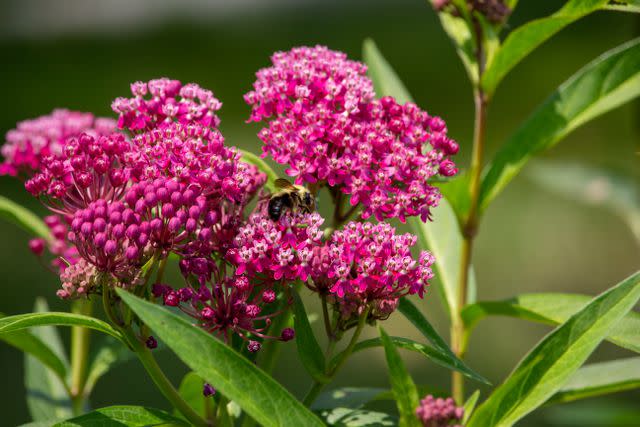
Cynthia Shirk / Getty Images
Native to wet landscapes such as swamps, the aptly-named swamp milkweed is an important food source for certain butterfly species, which are eaten by dragonflies. The damp environments where they grow will also attract mosquitoes, another key food source for them.
Name: Swamp Milkweed (Asclepias incarnata)
USDA Hardiness Zones: 3-9
Light: Full
Soil: Clay, loamy
Flower Color: Pink, red, white
Water Lily
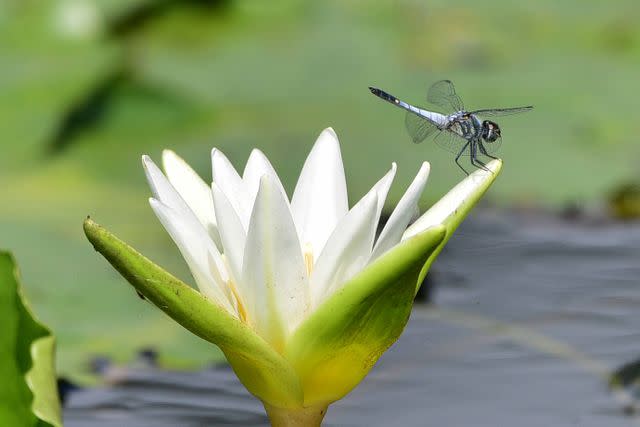
NurPhoto / Getty Images
Like dragonflies, water lilies rely on a water source to survive. These water-loving plants provide dragonflies with a safe location to lay their eggs as well as protect young dragonflies with places to hide. Adult dragonflies love to hover over the colorful blossoms.
Name: Water Lily (Nymphaea)
USDA Hardiness Zones: 4-11
Light: Full
Soil: Loamy, clay, silt, sandy
Flower Color: Blue, white, purple, yellow, red, pink, orange
Wild Celery
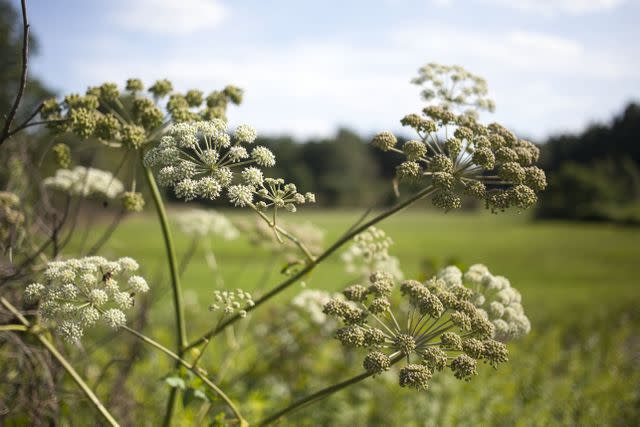
Not to be confused with the domesticated celery that you find in the grocery store, wild celery has thin, wispy stems and long, leafy foliage. Also known as American eelgrass, wild celery tends to grow near marshes, rivers and in tidal areas, and provides a surface for dragonflies to lay their eggs on.
Name: Wild Celery (Vallisneria americana)
USDA Hardiness Zones: 4-10
Light: Full, partial
Soil: Clay, loamy, sandy
Flower Color: White
Pickerelweed
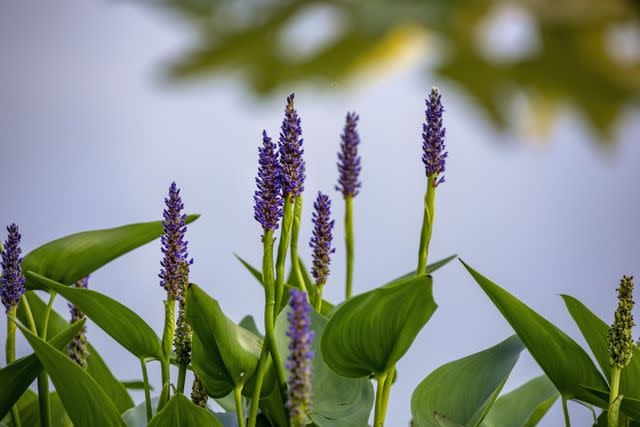
Ali Majdfar / Getty Images
This aquatic flowering plant grows in a variety of wetlands and typically grows between two to four feet tall. Pickerelweed is often found where pickerel fish live, hence its name, and its tall spikes of white, blue, pink, or purple flowers act as a food source for many pollinator insects.
Name: Pickerelweed (Pontederia cordata)
USDA Hardiness Zones: 3-10
Light: Full
Soil: Soggy or submerged, muddy, loamy
Flower Color: White, blue, purple, pink
Meadow Sage
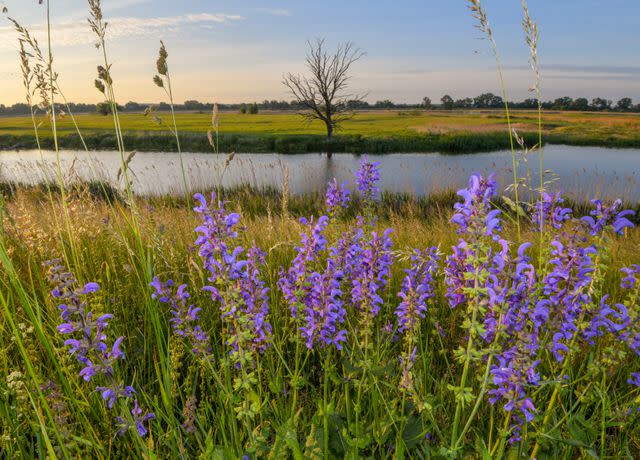
picture alliance / Getty Images
Meadow sage, a type of Salvia, produces numerous and dense, vibrant purple-blue flowers that attract pollinators like butterflies and hummingbirds as well as dragonflies.
Name: Meadow Sage (Salvia pratensis)
USDA Hardiness Zones: 4-8
Light: Full
Soil: Well-drained, loamy, sandy
Flower Color: Purple
Joe Pye Weed
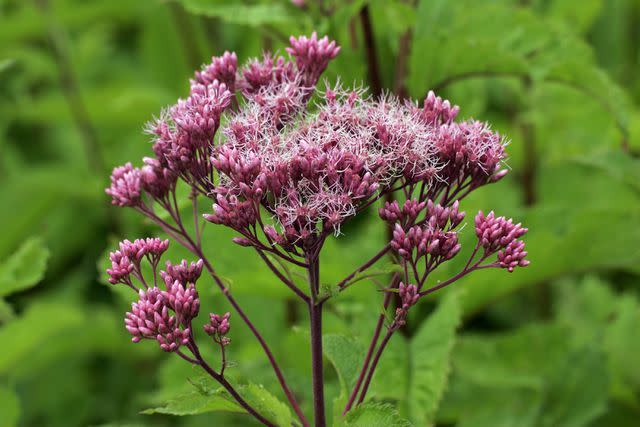
ullstein bild / Getty Images
A pretty perennial plant, Joe Pye weed produces flower clusters boating pink-purple flowers with a sweet vanilla scent that attracts butterflies, dragonflies and other pollinators.
Name: Joe Pye Weed (Eutrochium purpureum)
USDA Hardiness Zones: 4-9
Light: Full, partial
Soil: Moist, well-drained
Flower Color: Mauve pink, pink-purple
Asiatic Lily
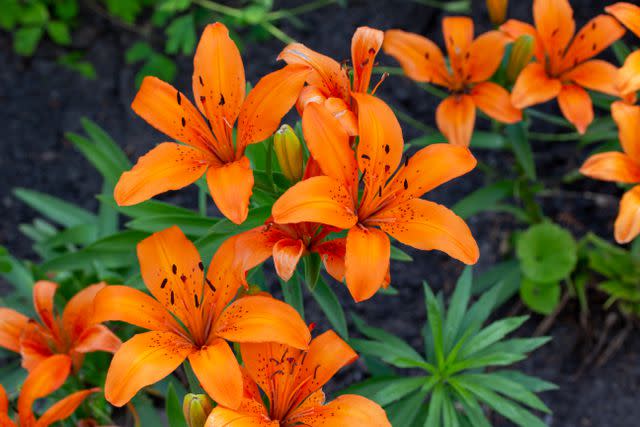
Cynthia Shirk / Getty Images
Intensely colored and scented, Asiatic lilies bloom in later spring or early summer and will grow upright between 2-5 feet tall. Their showy height and colors invite dragonflies to perch on the blooms.
Name: Asiatic Lily (Lilium Asiatic hybrids (formerly Lilium asiatica))
USDA Hardiness Zones: 4-8
Light: Full, partial
Soil: Moist, well-drained
Flower Color: Orange, pink, red, yellow, purple, white
New York Ironweed
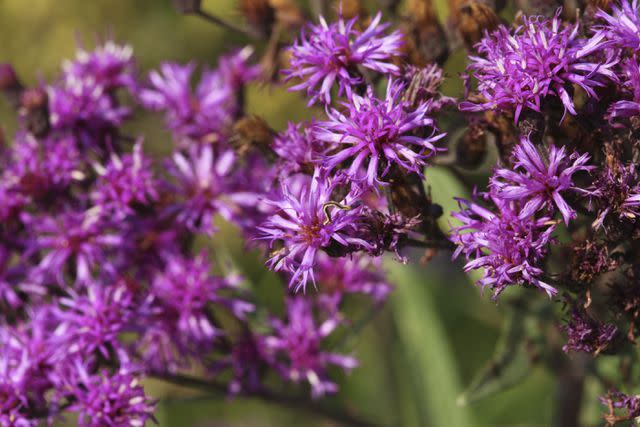
NajaShots / Getty Images
A wildflower with dense clusters of vibrant purple flowers, New York ironweed is an eye-catching plant for any insect to land on. It also thrives in moist soil and is tolerant of mild flooding, meaning it's suitable in the same wet environment that dragonflies prefer.
Name: New York Ironweed (Vernonia noveborecensis)
USDA Hardiness Zones: 5-9
Light: Full
Soil: Moist, loamy
Flower Color: Purple
Bearded Iris
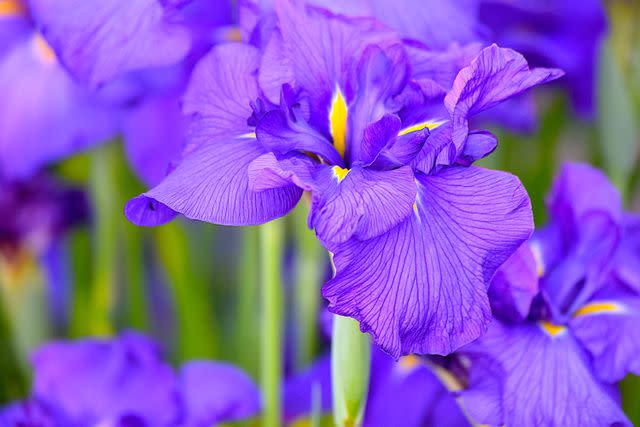
Philippe Gerber / Getty Images
Bearded iris is the most popular category of irises, and have sword-like leaves and flowers with drooping lobes. There are many colors of bearded iris, the flowers of which contain abundant nectar to attract dragonflies with.
Name: Bearded Iris (Iris germanica)
USDA Hardiness Zones: 3-10
Light: Full
Soil: Humusy, well-draining
Flower Color: Red, orange, blue, purple, yellow, brown, white, pink, other bicolors
Borage
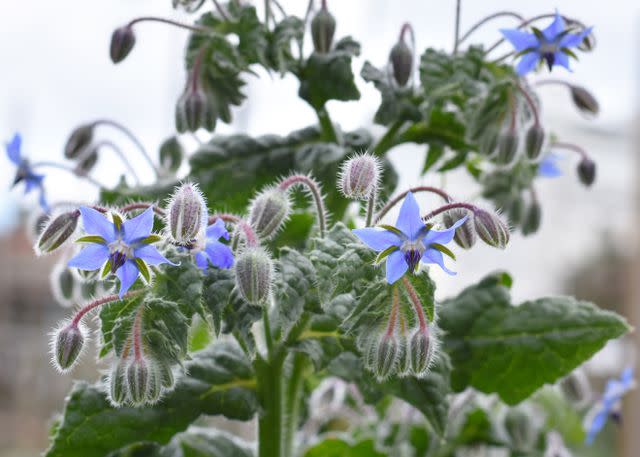
Barbara Fischer, Australia / Getty Images
A fast-growing, annual herb, borage has vivid blue flowers that smell and taste like cucumber. Its star-shaped flowers attract tiny pollinators that also serve as food for dragonflies.
Name: Borage (Borago officinalis)
USDA Hardiness Zones: 2-11
Light: Full, partial
Soil: Dry to medium moisture, well-drained
Flower Color: Blue
Tickseed
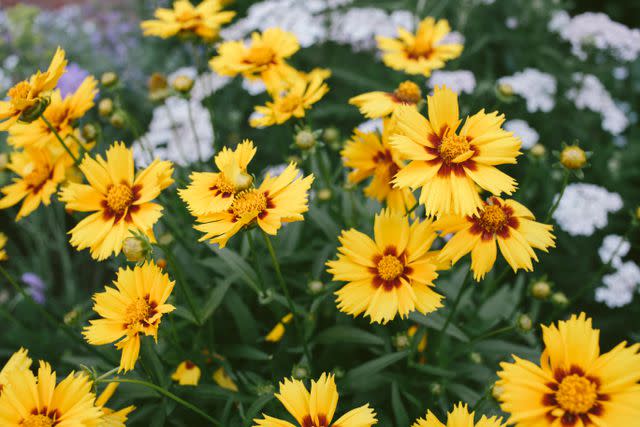
Grace Cary / Getty Images
This hardy plant produces daisy-like flowers from summer into fall, surviving until the first frost. Low-maintenance tickseed (also known as coreopsis) attracts butterflies, dragonflies, and other pollinators.
Name: Tickseed (Coreopsis spp.)
USDA Hardiness Zones: 3-9
Light: Full
Soil: Well-drained, sandy
Flower Color: Yellow, orange, red, pink, white
Common Cattail
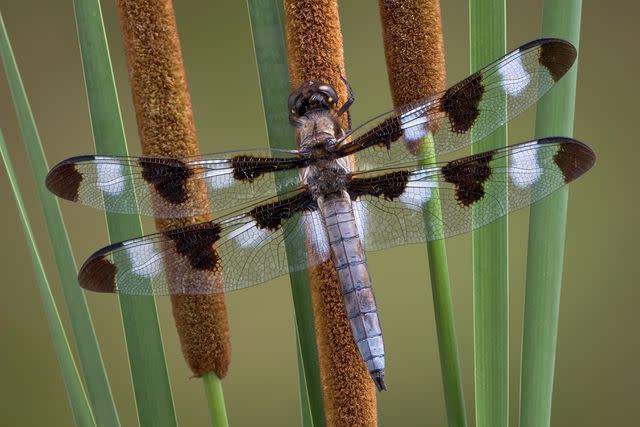
CathyKeifer / Getty Images
A perennial aquatic plant, common cattails (also known as bulrush) thrive in shallow waters found in boggy marshes and wetland areas. With the right conditions, these plants can grow upright as tall as 10 feet high, providing cover for dragonflies passing through. They're also good for dragonfly eggs and young dragonflies.
Name: Common Cattail (Typha latifolia)
USDA Hardiness Zones: 3-10
Light: Full, partial
Soil: Moist, loamy
Flower Color: Brown
Yarrow
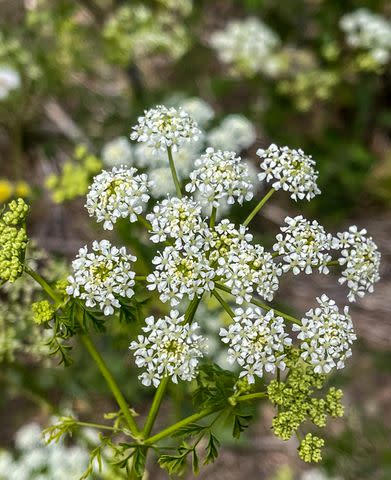
George Rose / Getty Images
Because yarrow is an important source of nectar for pollinators, it attracts dragonflies and the insects they eat. The aromatic flowers come in a variety of colors, including white, yellow, and pink.
Name: Yarrow (Achillea millefolium)
USDA Hardiness Zones: 3-9
Light: Full
Soil: Sandy, well-drained
Flower Color: White, yellow, pink
Pink Muhly Grass
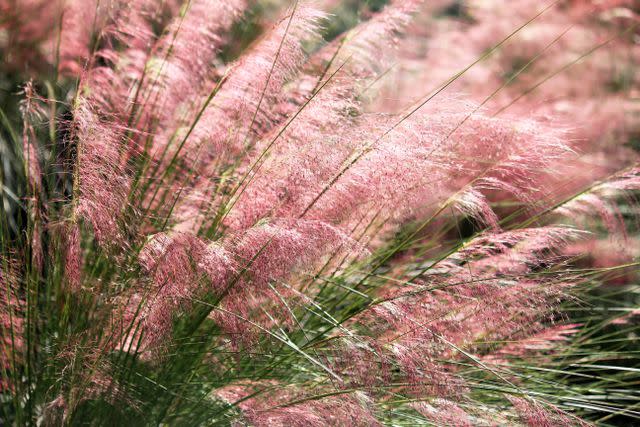
Zen Rial / Getty Images
Dragonflies love to lay their eggs in this ornamental grass. Pink muhly grass blooms with pale pink flowers in autumn and adds texture and variety to your garden.
Name: Pink Muhly Grass (Muhlenbergia capillaris)
USDA Hardiness Zones: 5-9
Light: Full, partial
Soil: Dry to medium moisture, well-drained
Flower Color: Pink, pinkish-red
Frequently Asked Questions
How do I keep dragonflies in my backyard?
Dragonflies are aquatic insects that need fresh water to breed, so one of the best ways to attract them to your backyard is to provide a source a fresh water such as a pond. Give them a place to perch and lay their eggs. If you add plants to your garden that attract insects that dragonflies feed on—such as mosquitoes and flies—then dragonflies will be more likely to linger.
What smell are dragonflies attracted to?
There is no scientific evidence that dragonflies are attracted to a certain fragrance. In fact, dragonflies lack the brain infrastructure normally required for a sense of smell. Some research has indicated they can process odors through other parts of their nervous system, but it's unknown which odors specifically. When choosing plants to attract dragonflies to your garden, your best bet is to select ones that their prey like, such as sweet-scented flowers. The dragonflies will be sure to follow.
Read Next: All About Pollinators: What They Are and How to Support Them
Read the original article on The Spruce.

